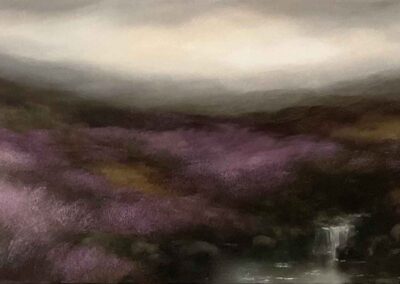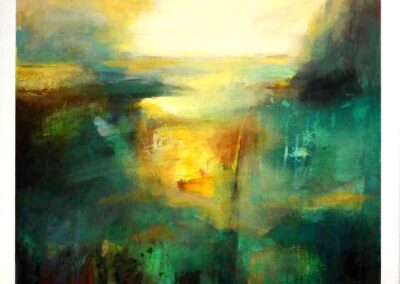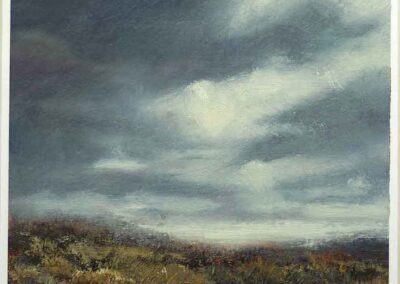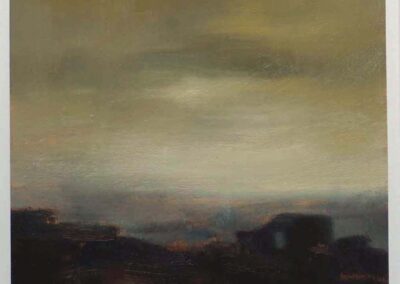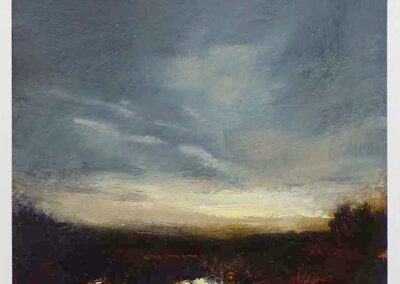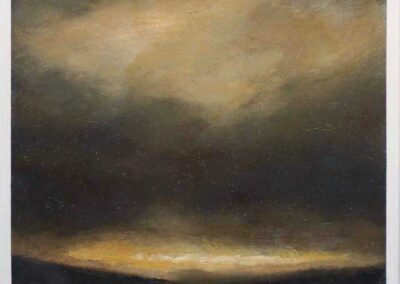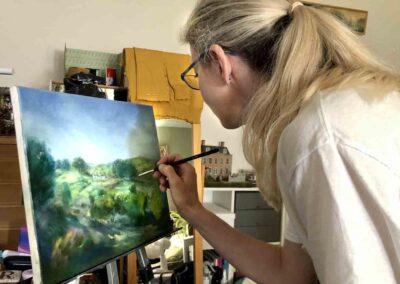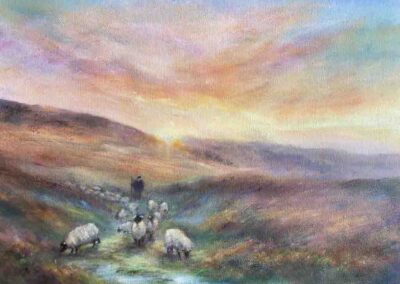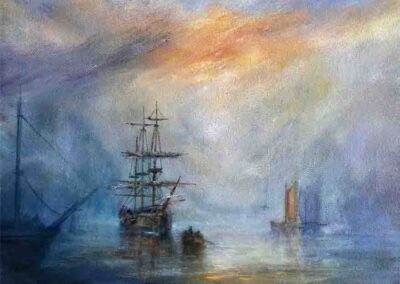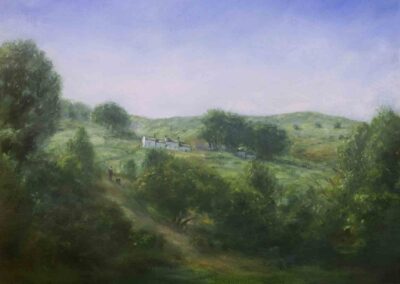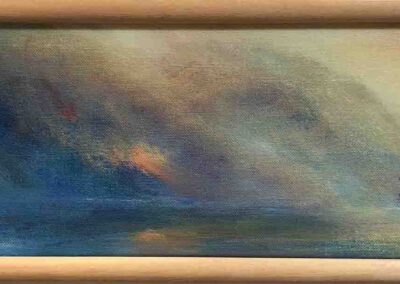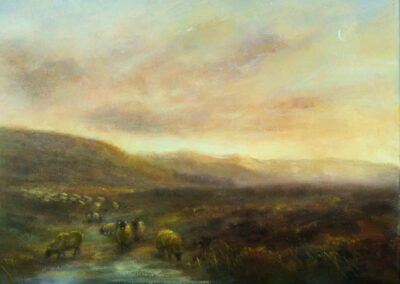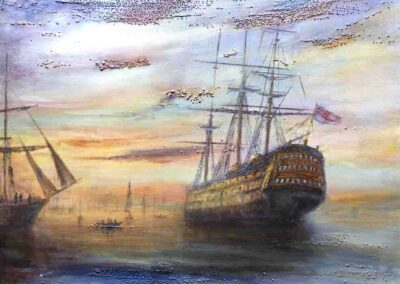The Bingley Gallery is paying tribute to arguably, Britain’s greatest artist – a painter who had strong links to our region.
He was no Yorkshireman – JMW Turner was the son of a Covent Garden barber and wig-maker, born in 1775. This precociously talented artist travelled extensively, his first trip to ‘The North’, aged 22 included a stay at Harewood House, where the art-loving owner, Edward Lascelles was to become an important client. However, it was due to a long friendship with Walter Ramsdale Fawkes, of the much less grand Farnley Hall, near Otley, that Turner came to visit the county on a near annual basis between 1808 and 1824. No mean feat when travel – by stagecoach – was an uncomfortable, time-consuming and expensive undertaking. From the hall, forays out to potential viewpoints were often made on horseback, undaunted by poor weather. In fact it was a snowstorm on Otley Chevin that is reputed to have inspired Turners ‘Hannibal Crossing the Alps’ and Yorkshire inspired paintings feature heavily in his output.
In appreciation of Turner’s response to the Northern landscape, The Bingley Gallery has brought together a group of present-day artists whose passion for painting and love of dramatic landscapes is shared with the great man.
Don’t miss our Launch on Wednesday 24 August 7-9pm
Judith Levin
Judith has the unusual distinction of living in a building once depicted by Turner. As she notes: “In 1816 Turner painted Gledhow Hall and you could say, poetically speaking, I live inside this painting. I am a tenant in the Hall, a stately home in Turner’s time, now divided into flats. You can see the windows of my rooms clearly in his painting. My first idea of what to contribute to the ‘Footsteps of Turner’ show was to paint Gledhow Hall myself, from the same viewpoint as Turner, but if you are over there today there is no possible way of seeing the Hall. What was arable land in 1816 is now dense woodland and there is nothing to see but the woods.”
Judith tried to rely on her own imagination to reproduce the scene, but decided the result was an anachronism, she painted it out again and discarded the canvas. “Then I had the idea to do a painting of an empty room inside Gledhow Hall with the Turner print on the wall but this work was also discarded. However, the lake in Turner’s painting is still there and a short walk down into the valley through the woods, and here was my solution, to paint just the lake and the trees on a misty morning. Fans of Judith’s instantly recognisable misty moorland views will not be disappointed either, with canvasses that fill a large wall down to tiny works, no larger than a playing card.
William Morrison
William Morrison’s work falls into the long British tradition of landscape art. A native of Scotland, he moved to West Yorkshire over 40 years ago. He considers the county, “with its dramatic light effects, and the ever-changing weather, cannot be bettered as place to paint. As he explains “My art practice depends on the mood of the weather and the moods inside myself”. William’s paintings may include thin layers or thick impasto oil paint, much like the built-up strata of a moorland landscape with its layers of bedrock peat and heather, such that the painting conveys a feeling of time and place.
Rachel Hinds
Rachel Hinds is a fine artist who, as an archaeology graduate, is inspired by the past, particularly by 19th century romantic paintings. She reimagines the past with a dash of colour, conjuring up atmospheric and dramatic scenes that interact directly with the on-looker’s emotions. Expect Viking longships venturing into rocky inlets, coastal scenes with nineteenth century frigates peacefully moored and shepherds bringing their flocks down from the moors at the approach of winter. The painting style is described by the Leeds –born artist as ‘experimental with expressive brushstrokes, strong colours and textures’. There is a high degree of abstraction within the landscapes which often contrasts with the detail of the focal subject matter.
Rachel Hinds CA34′ The Shepherd; Bringing the Flock Down Ilkley Moor’ oil on box canvas 30x30cm _£180
Dan Metcalfe
The show will also introduce a new artist to the Gallery, Dan Metcalfe, who studied fine art at Bradford College of Art and Huddersfield University and is now based in Thornton. His oils are perhaps less ‘Turneresque’ but are still predominantly landscapes with considerable impact and a degree of abstraction, to leave something for the viewer’s own imagination.


